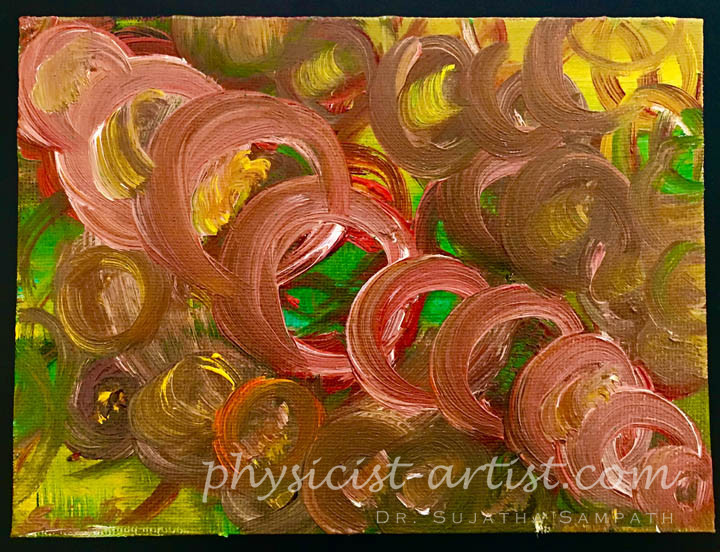“The most beautiful thing we can experience is the mysterious. It is the source of all true art and science.” — Albert Einstein
Physics and arts, have often been perceived as two disparate diverging disciplines.. Stereotypical notions of physicists do not portray them as having artistic leanings. However, historical and contemporary examples of physicists who have artistic interests and talents debunk these perceptions.. In essence, physicists and artists are both in a quest to understand Nature and its intricacies. Starting from a metaphorical ‘blank canvas’, both physicists and artists formulate their understanding through experimenting, failing and trying again by looking through a different lens until they find the answer.
Until few centuries back, division between the sciences and arts was minimal. Polymaths – people who were experts in a wide range of sciences like physics, biology, chemistry, geology and who were also excellent artists, were common. Art in this context includes art, music and performing arts. Leonardo da Vinci was one of the prominent examples of a polymath from the 15th century, who was an exemplary artist with monumental contributions to science. Sir Jagadish Chandra Bose, who was a physicist and botanist, is another example of a polymath from the 19th century. Eminent physicists, Sir C.V Raman, Albert Einstein, Richard Feynman, coincidentally all of them Nobel Laureates, were all known have a deep passion for music and played musical instruments. Sir C.V Raman researched on physics of sound driven by his interest in the Indian drums/percussion instruments, the mridangam and the tabla.
There are many examples of contemporary physicists who are artists and musicians and, in many instances, pursue both disciplines as dual careers. There are many others who are physics researchers like myself, with a deep passion for the fine arts, pursue them as serious hobbies. This connection between physics and arts not only exists at an individual level, but also at an institutional level. Art institutes now have physicists in their faculty and foster students to collaborate on art projects intertwined with a scientific concept. Institutions like CERN and university science departments have collaborative programs with artists..
My rendezvous with the arts began at a very young age even before I knew physics as a discipline.. I’ve been sketching and painting since I was a child. Music has also been part of my growing up.. I’ve been trained in vocal music in the Indian classical style of Carnatic music. for many years. Colors and textures and optical effects in paintings resulting from interaction of light with different art mediums captivate me both as an artist and a physicist.
I am a condensed matter physicist, my research is in the realm of tiniest of scales that make this universe, in the world of atoms and molecules, the “nano-world”. I am interested in understanding how atoms and molecules self-organize themselves in complex patterns, leading to exotic material properties. Every time in my career when one of those ‘eureka’ or ‘aha’ moments occur, when all the different pieces of the puzzle come together in my head, when months and sometimes years of work suddenly reveal the answer to a fundamental mechanism, I am filled with an awe on the beauty and aesthetics in Nature..
There are many more examples of physicists and scientists at large who pursue science and arts in tandem. Motivation for this blog is to illustrate the connection between these seemingly disparate disciplines. and demonstrate through my own personal experiences as well as those of many other scientists that it is not only possible to pursue a scientific career and artistic interests in parallel, but to thrive doing so.

Pingback: Painting, with a mind of its own - Synchrony in Science & Arts